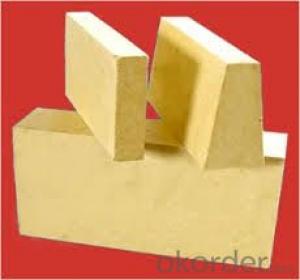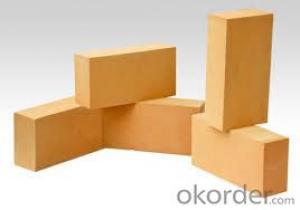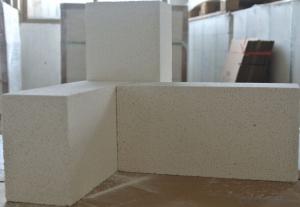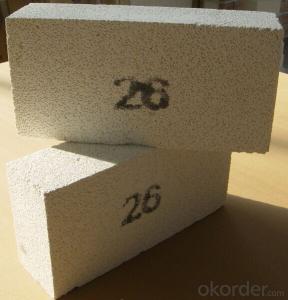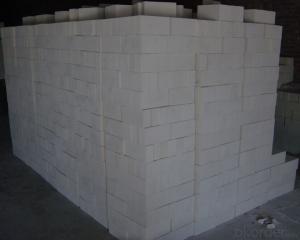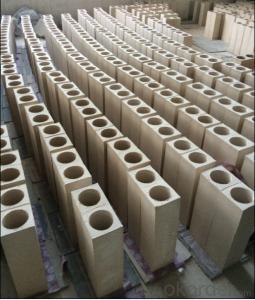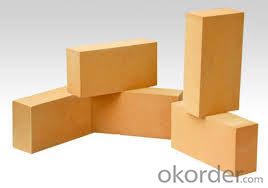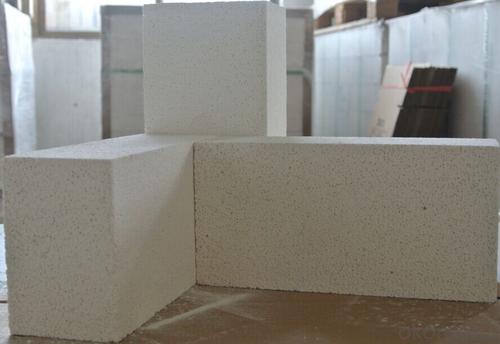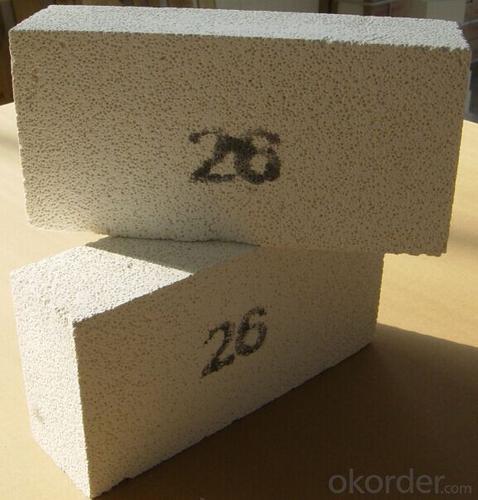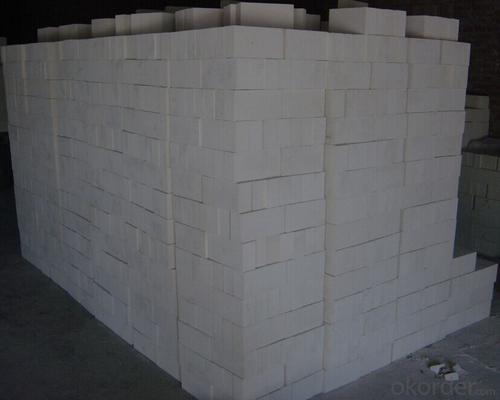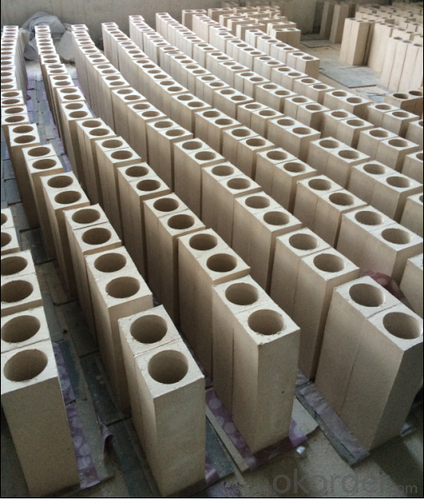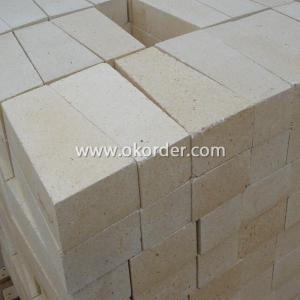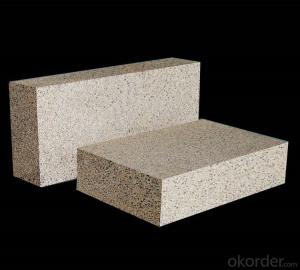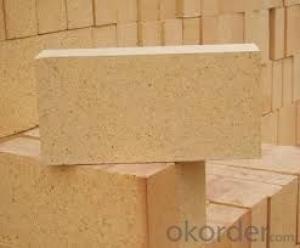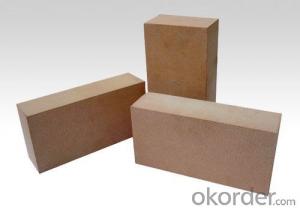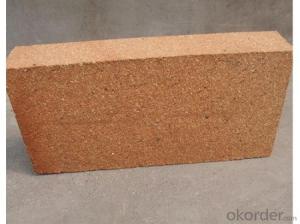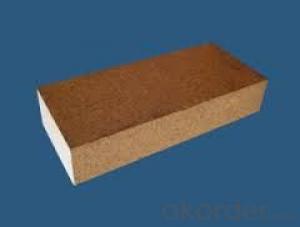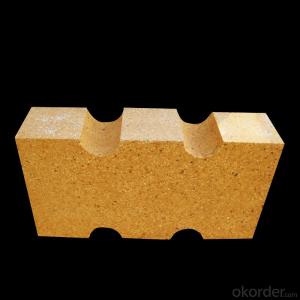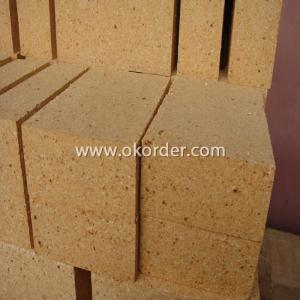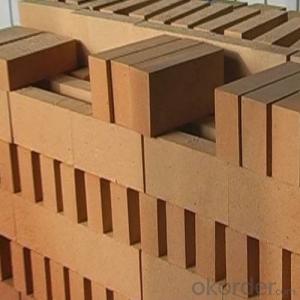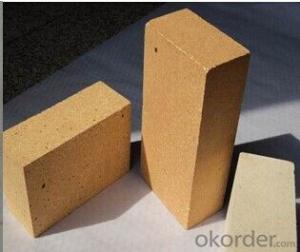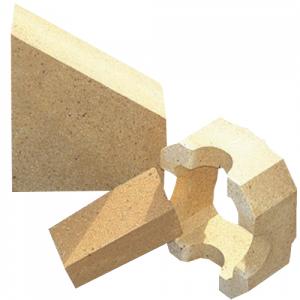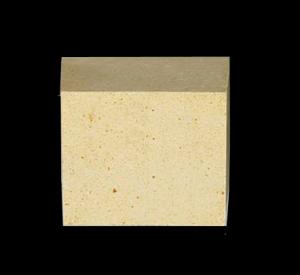Fireclay Insulation Brick for Cement Industry
- Loading Port:
- Qingdao
- Payment Terms:
- TT OR LC
- Min Order Qty:
- 2 m.t
- Supply Capability:
- 5000 m.t/month
OKorder Service Pledge
OKorder Financial Service
You Might Also Like
Brief discription for Clay brick of Insulation brick for cement industry
CMAX Clay brick of Insulation brick for cement industry are classified according to alumina content ranging from 48% to 90%.
CMAX Clay brick of Insulation brick for cement industry are commonly used in blast furnace, hot blast furnace, the roof of electric furnace, teeming ladle, rotary kiln,regenerator, etc.
Brief features for Clay brick of Insulation brick for cement industry
◆Low thermal conductivity
◆Excellent acid and base slagging resistance
◆High refractoriness
◆Excellent thermal shock resistance
◆Excellent mechanical strength
◆Good spalling resistance and wear resistance.
◆Good corrosion resistance.
◆High-temperature creep rate is quite low.
◆Good volume stability at high temperature.
◆Low bulk density, low thermal conductivity, good thermal insulation performance.
Technical data for Clay brick of Insulation brick for cement industry
ITEM | UAL48 | UAL55 | UAL65 | UAL75 | UAL80 | UAL85 | ALP80 |
Refractoriness, ℃ | 1750 | 1770 | 1790 | 1790 | 1810 | 1810 | 1810 |
Apparent Porosity,% | 22 | 22 | 23 | 23 | 20 | 20 | 18 |
C.C.S, Mpa | 39 | 44 | 49 | 53 | 55 | 60 | 100 |
Refractories Under Load (0.2Mpa),℃ | 1420 | 1470 | 1500 | 1520 | 1500 | 1520 | 1550 |
Reheating Linear Change,% | 1450℃x2h 0.1~-0.4 | 1500℃x2h 0.1~-0.4 | 1500℃x2h 0.1~-0.4 | 1500℃x2h 0.1~-0.4 | 1550℃x2h -0.5~+0.5 | 1550℃x2h -0.5~+0.5 | 1550℃x2h -0.5~+0.5 |
Al2O3 Content , % | 48 | 55 | 65 | 75 | 80 | 85 | 82 |
FAQ
Q1:Are you a manufacture or trader?
A:Factory+trade(mainly factories,at the same time,we operates other related products).
Q2:Can we visit your factory?
A:Sure,welcome at any time,seeing is believing.
Q3:What's the MOQ of trial order?
A:No limit,We can offer the best suggestions and solutions according to your condition.
Q4:Which payment terms can you accept?
A:T/T,L/C are available for us.
Q5:After an order is confirmed,when to deliver?
A:15-25days after deposit.
Q6:Is your company accept customization?
A:We have own factory and excellent technical team,and we accept OEM service.
Q7:How about your company's certification?
A:ISO9001 and Test Report,also we could apply other necessary certification.
Q8:How to slove the quality problems?
A:If the products are not confirmed to customer samples or have quality problems,our compay will be responsible to make compensation for it.
- Q: What is the specific heat of a refractory bricks (clay)?
- Approximately it's about 2000; M3 specific heat is wrong with this argument, two degree clay is 1730 degrees, three degree clay is 1690 degrees, clay bricks are mixture, bulk density, 1900KG/, only elementary substance has specific heat refractoriness.
- Q: Why can earth make bricks?
- Therefore, it is still widely used in masonry projects such as walls, foundations and columns. However, due to the production of traditional clay brick to destroy the field, large amount of soil sampling, high energy consumption, brick from the major, high labor intensity and low efficiency in construction, it is necessary to gradually reform and replace with new materials. Some cities have banned the use of clay bricks in buildings. Brick for sintering brick and non sintered brick in accordance with the production process; according to the raw materials used for clay brick, shale, coal gangue brick, fly ash brick, slag brick and lime sand brick; according to whether the hole is divided into hollow brick, brick. In addition to clay, or as raw materials for preparation of brick by using fly ash, coal gangue and shale, which is due to their chemical composition similar to clay, but because of the fineness of less clay, so the poor plastic bricks often to be mixed with a certain amount of clay, in order to increase the plasticity. The use of coal gangue and fly ash and other industrial waste residue brick, not only can reduce the environmental pollution, saving large areas of farmland clay, and can save a lot of fuel coal.
- Q: What is refractory brick? What is refractory clay? ?
- refractory brick----is refractory material with a certain shape and size. According to the preparation process, bricks can be classified into burnt bricks, unburned brick, electric melting brick (fused cast brick) and the refractory insulating bricks; according to the shape and size, bricks can be classified into standard brick, ordinary brick and specific brick and etc. High-temperatured building material and structural material that can be used to build furnaces and various thermal equipments, and can endure various physical and chemical changes and mechanical effects at high temperature. For example, refractory clay brick, high alumina brick, cilica brick and magnesia brick and etc.. Fireclay -- usually refers to a kind of soil clay used for fire the stove and the furnace hearth in folk 1, characteristics and usages: Clay refractory brick is a kind of weak acid refractory material, its thermal stability is good, suitable for hot blast stove, various boiler lining, and flue, smoke room, etc.. 2, product specifications: Standard form, general profile, special shaped and special shaped brick. Physical and chemical properties of clay refractory bricks. The upper limit ---- about 1500 degrees under normal pressure
- Q: What is the refractory temperature of refractory bricks?
- First look at the used parts of refractory brick, anti stripping performance, these are the most basic performance factors, the refractory temperature of high alumina brick is 1770 -1790 degree, the refractory temperature of clay brick is 1380-1570 DEG C, record the anti acid corrosion data of refractory bricks, the compressive strength of refractory bricks, at the same time, you should analyze each part of the furnace pH index and sintering temperature of working. When purchasing refractory bricks, you need to pay attention to many factors, high temperature creep property, softening temperature under a fixed load, 6548, volume stability at high temperature. Because the production of the product is affected by the weather and fuel energy, etc.. 186, select the suitable refractory bricks
- Q: th choose of different refractory bricks in the rotary?kiln
- According to the characteristics of each belt, magnesium chromium brick. Take the most kiln foe example, the configuration of kiln refractory is not the same, the burning of the product is not the same. there are many kinds of rotary kiln. magnesia bricks are generally used in high temperature zone, anti-stripping alumina brick,silmo brick are used in temperate zone, clay brick is mainly used in low temperature zone. generally inlet and the outlet use corundum mullite, wear-resistant castable, spinel brick,etc. select brick of proper performance, but also take into account the economy
- Q: the amount of per square refractory brick of Various specifications and thickness of the refractory brick wall
- 9 grams-47. 7 grams- 47 calculate by your own according to the actual volume; cubic centimeter; 2.2 grams Clay brick 2: 1; 3, high alumina brick 3; cubic centimeter; standard density, cubic centimeter: 230mm * 114mm * 65mm, diatomite insulation brick 0, you can calculate the reference value
- Q: Are buildings allowed to use red bricks?
- Is the red brick with clay, shale, coal gangue as raw materials, crushing, mixing kneading with artificial or mechanical pressing, sintering and building bricks after drying at 900 centigrade temperature by oxidizing flame firing. Also called clay brick. Red brick technical specifications are generally from 75 to 100. Ordinary fired brick (red brick) is also called standard brick. The size is 240*115*53. (mm) red colour, sometimes dark. Ordinary clay brick has a certain strength and durability, but also because of its porous and has a certain insulation, heat insulation, sound insulation and other advantages. Therefore, it is suitable for wall materials and masonry columns, arches, chimneys, floors and foundations. Old buildings use it as building materials. Invented by the Romans, many of the remaining classical structures in Europe had red brick and brick roofs and walls.
- Q: What are the differences between fired brick and clay brick?
- Clay brick is a kind of sintered brick, which is made of clay as raw material. Clay brick, ceramic tile and rock sheet brick also belong to sintered brick, so the range of sintered brick is wide.
- Q: cement concrete What kind of cement should be used to manufacture high temperature resistant Kang cement?
- Portland slag cement 325 or 425. Use phosphate cement or aluminate cement. Use portland cement. You can also use the fragment and power of waste refractory brick or fireclay brick or aluminous refractory brick.
- Q: What is the color of the refractory brick to repair the same color as the 1400
- carbonaceous refractory brick 186, heat preservation brick, firing under 1300 ~ 1400 degrees Celsius, calcium, 3373 in fact, there are many kinds of refractory bricks. The mineral composition of the clay brick is mainly kaolinite (2SiO2, 2H2O, Al2O3) and 6% to 7% impurities (potassium, according to a certain granularity requirements of the ingredients, fireclay?brick, etc., after molding, titanium, dry.
Send your message to us
Fireclay Insulation Brick for Cement Industry
- Loading Port:
- Qingdao
- Payment Terms:
- TT OR LC
- Min Order Qty:
- 2 m.t
- Supply Capability:
- 5000 m.t/month
OKorder Service Pledge
OKorder Financial Service
Similar products
Hot products
Hot Searches
Related keywords
